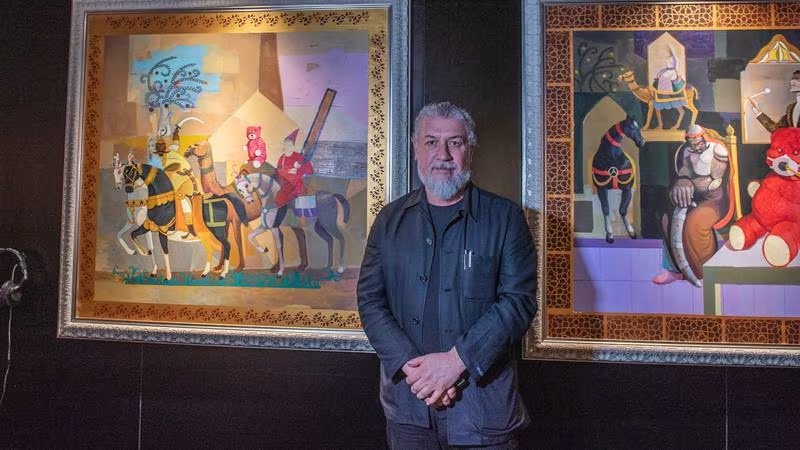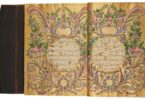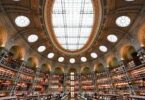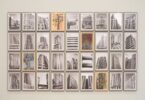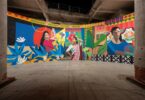Maan Jalal
“Truly at first sight I loved her, I who had slain her kin,” reads the line from the ancient Arabic poem The Ode of Antara by the famed pre-Islamic poet and warrior Antarah Ibn Shaddad.
In this section of the poem, Shaddad describes the first moment he saw the love of his life, Abla. She is his cousin by blood but his superior in birth, since he was born a slave.
Their epic love story is intertwined with the lore of the poet, one of the most formidable sixth century figures from the Arab world. It is a love story that is also depicted by Iraqi painter Mahmood Shubbar in his latest exhibition.
More than 20 large-scale figurative paintings hung in the Manarat Al Saadiyat gallery space at during the inaugural Arabian Days festival, which ran from December 15 to 18, celebrating Arab culture through art, film screenings and talks.
The story of Antarah and Abla is one that is also deeply connected to Arab culture, a tale that in Shubbar’s opinion, is not as well known as it should be.
“I could summarise within the tale of Antarah and Abla all the stories of love and desire in the whole of human history,” Shubbar tells The National on the final day of the festival.
“It is a story of class, race, prejudice of love, many elements that we still suffer from today. The presence of any man and women in this context of forbidden love, whether they have been recorded as fact or are based on fiction, has strong symbolic meaning to us.”
:quality(70)/cloudfront-eu-central-1.images.arcpublishing.com/thenational/L2JO4LDVEJGADDHNAHLB67F3DI.jpg)
Shubbar is a fan of Antarah’s poetry but more than that, believes that his story with Abla represents an opportunity to teach the word about the depth of Arab culture.
Antarah was born in 525AD in the Saudi Arabian region of Najd. He was the son of a great warrior and an Ethiopian slave. Due to the colour of his skin and the identity of his mother, Antarah was considered to be a slave but won his freedom by defeating a group of invaders into their lands. Yet still, when he asked for Abla’s hand in marriage, he was expected to face a number of extreme challenges to be seen as worthy.
“When you hear the names Romeo and Juliet, you instantly know the story. But when we speak about Antarah and Abla we don’t have that same instant recognition,” Shubbar says.
“I’m exploring this area, looking at the elements of this story that are local to this region and then translating them to the universal. I try to do this in a mindful, elegant way.
“It’s important to do this so the world can understand that Arab culture isn’t a narrow or closed. Ours is a deep culture with a rich history, a culture that has important pillars that people can benefit from.”
The paintings depict detailed, captivating portraits of the warrior poet and surreal scenes of imagined moments between Antarah and Abla. Shubbar paints them in vivid, lustrous colours, within ornate arabesque boarders, and organic compositions and spaces.
His figures, while stylised, have a striking sense of realism in their gestures, gazes, and movements.
The references in Shubbar’s work are broad. From traditional Arabic motifs to the stylistic details and use of flatness seen in Persian illustrations and illuminations. There is also a modern sensibility seen in the iconography of contemporary images that are a stark contrast to the figures of Antarah and Abla in their imagined pre-Islamic attire.
Abla rides a camel in the distance. Antarah stands in the foreground next to the figure of legendary Egyptian singer and actor Abdel Halim Hafez. In another painting, Abla is on a treadmill and Antarah watches her from behind a tree.
They ride together on a beautifully-painted black horse shielded from the purple sky by a pink umbrella that has Disney princesses illustrated across it. In most of the paintings, there is a reoccurring red teddy bear. It is a modern symbol of love and Valentine’s Day, Shubbar explains.
:quality(70)/cloudfront-eu-central-1.images.arcpublishing.com/thenational/QAAB7SHD4BDCZALXGYL4EJKK7A.jpg)
This fusion of images, time periods and symbols, feed into Shubbar’s greater ideas of the power of visual language and culture.
“I have found that people around the world record and preserve their stories,” he says. “Yet we have struggled to do so with our priceless stories, to preserve them and recreate them in different ways.”
Shubbar believes much of the literature about contemporary art and culture in the Arab world is outdated. He feels there are more interesting ways to delve and analyse Arab history and culture by using modern aesthetics. It was from this angle that he developed his own artistic approach – Shubbarisim.
It’s a method of exploring history where elements of the past are reimagined using multiple styles or references, yet existing cohesively on one the visual plane.
Shubbar has perfected this approach. His works effortlessly combine time periods from pre-Islamic to the Islamic period. From notions of impressionism to contemporary art, Shubbar takes what he wants and creates a visual language without boundaries, working directly from his instincts.
“As Arabs, as creatives and intellectuals, are we capable of finding and creating our own references and literature and visual languages that are specific to us that we can translate to the other or are we not” he asks.
“If not, we have to abandon this practice. If we can, then we need to prove ourselves and this takes some bravery.”
Courtesy: thenationalnews

